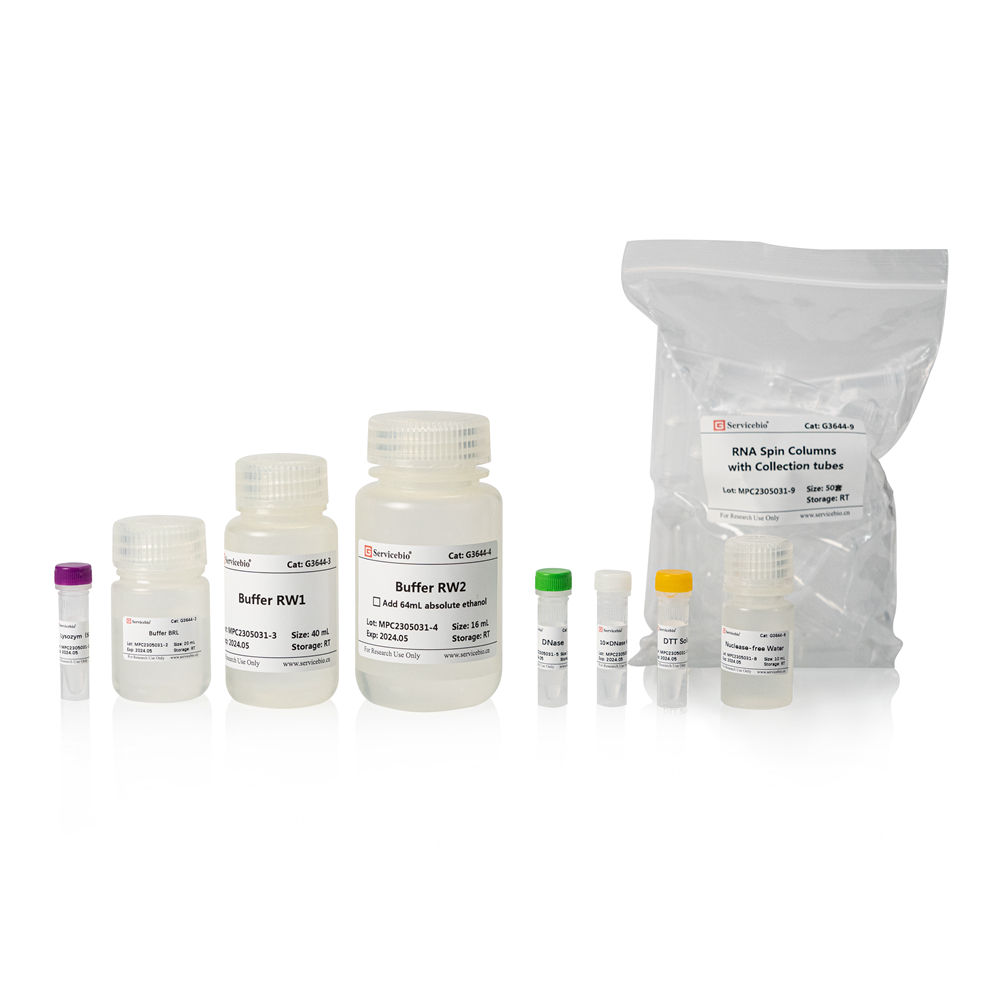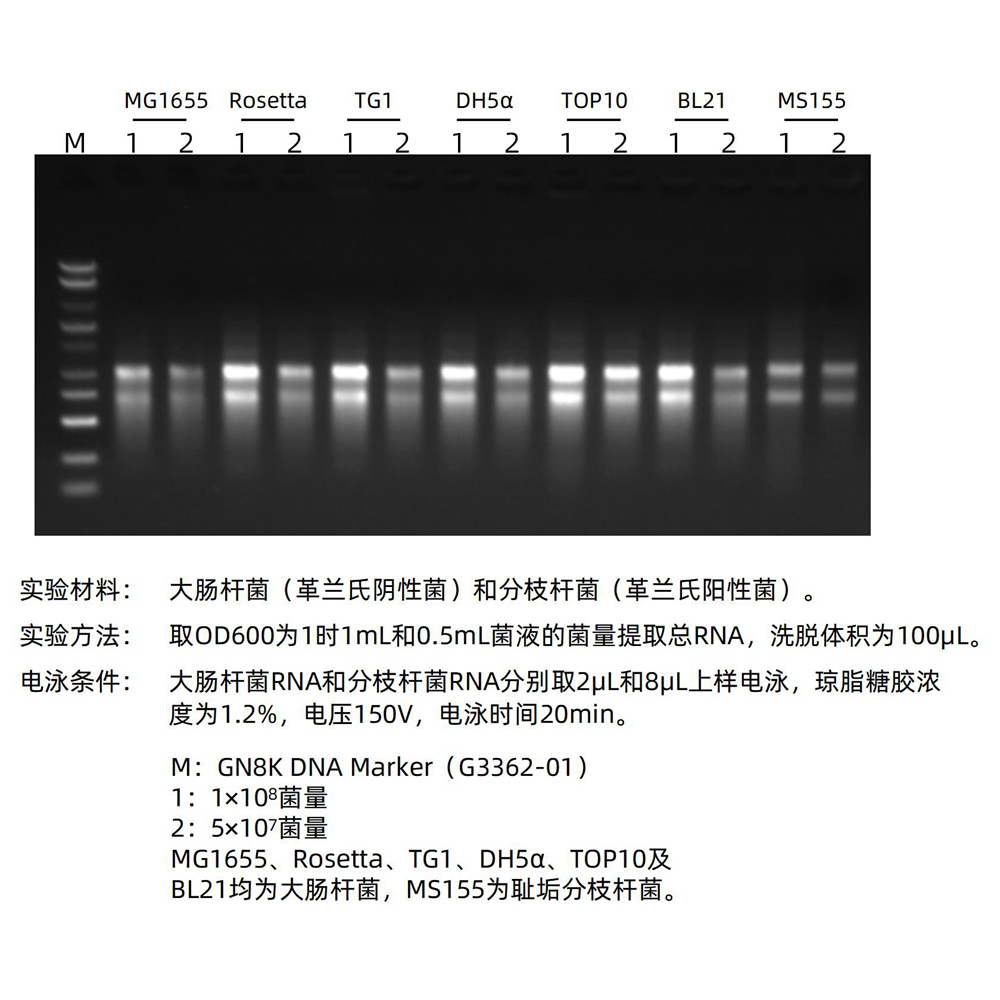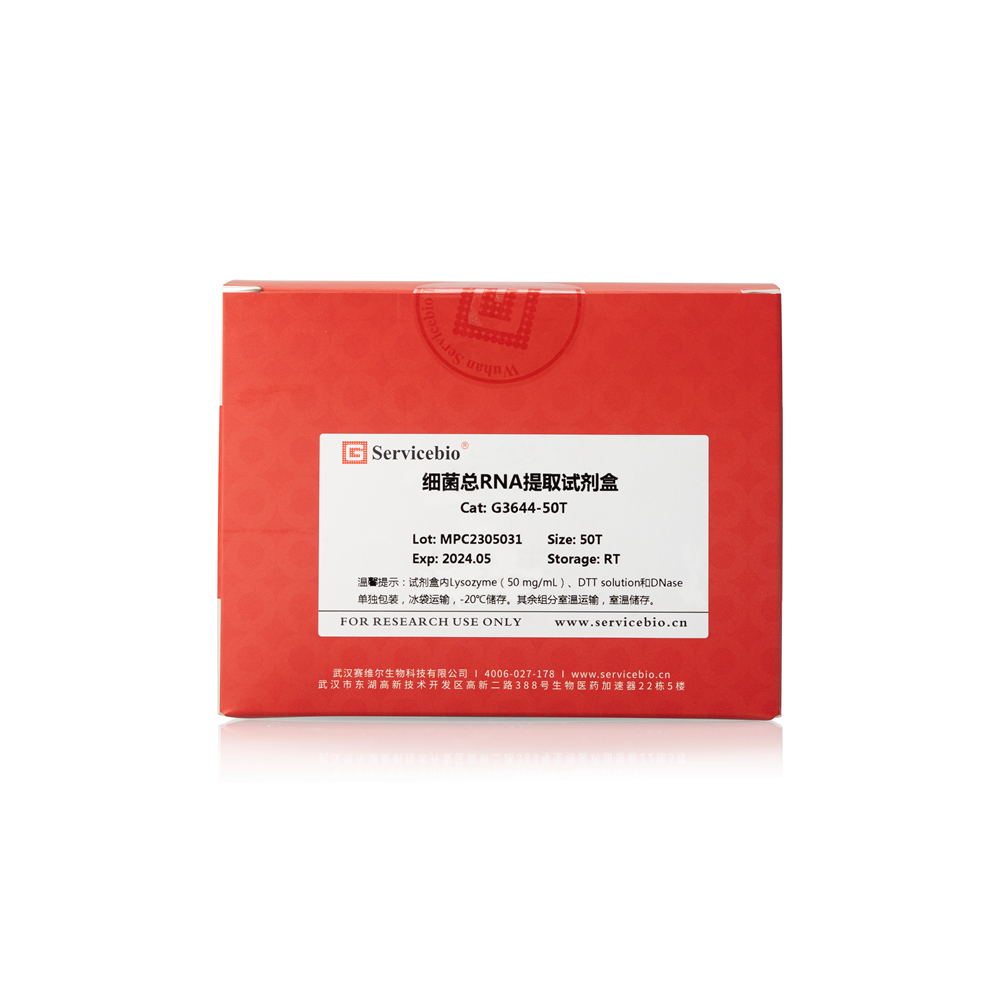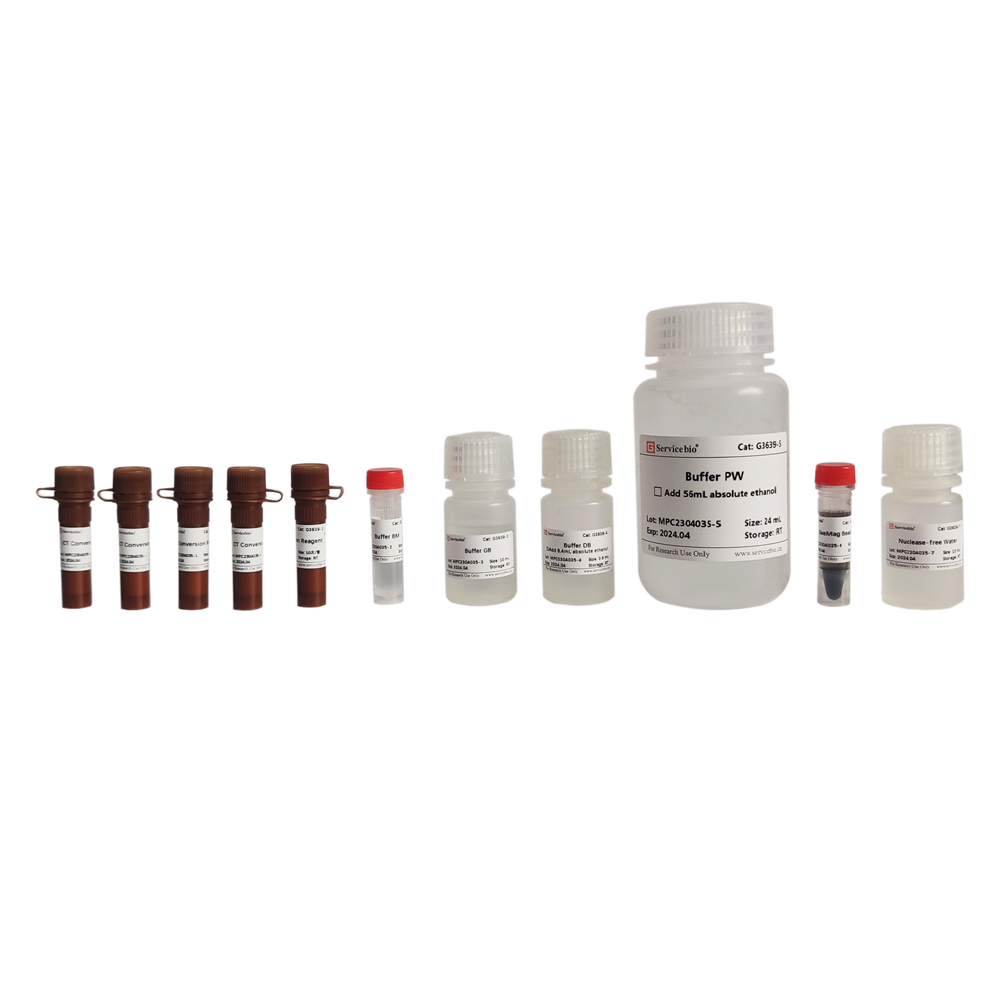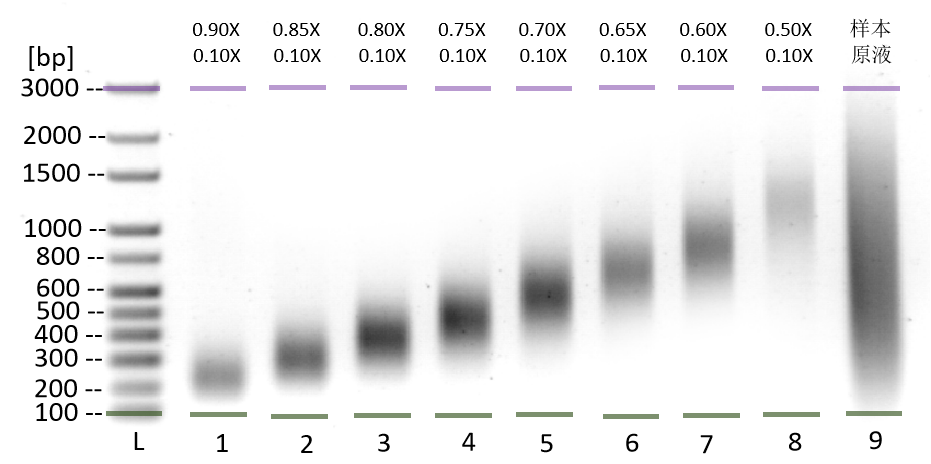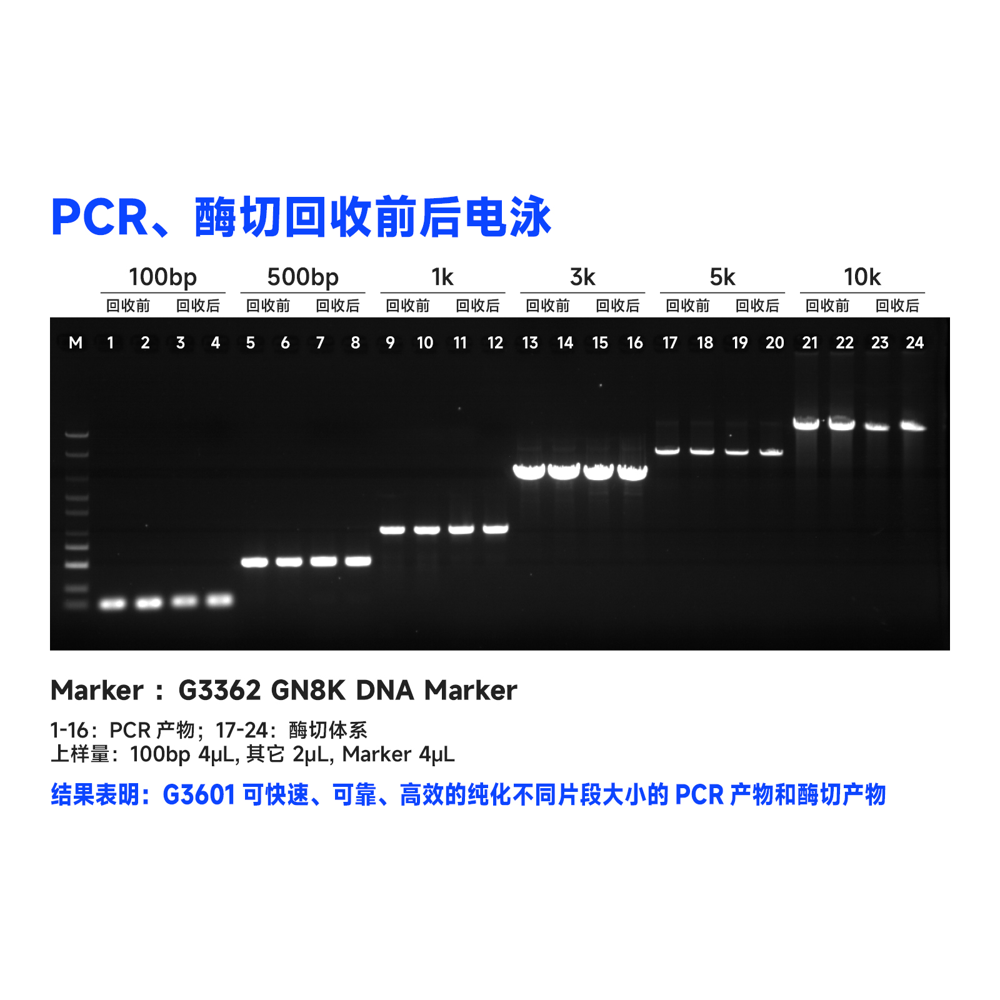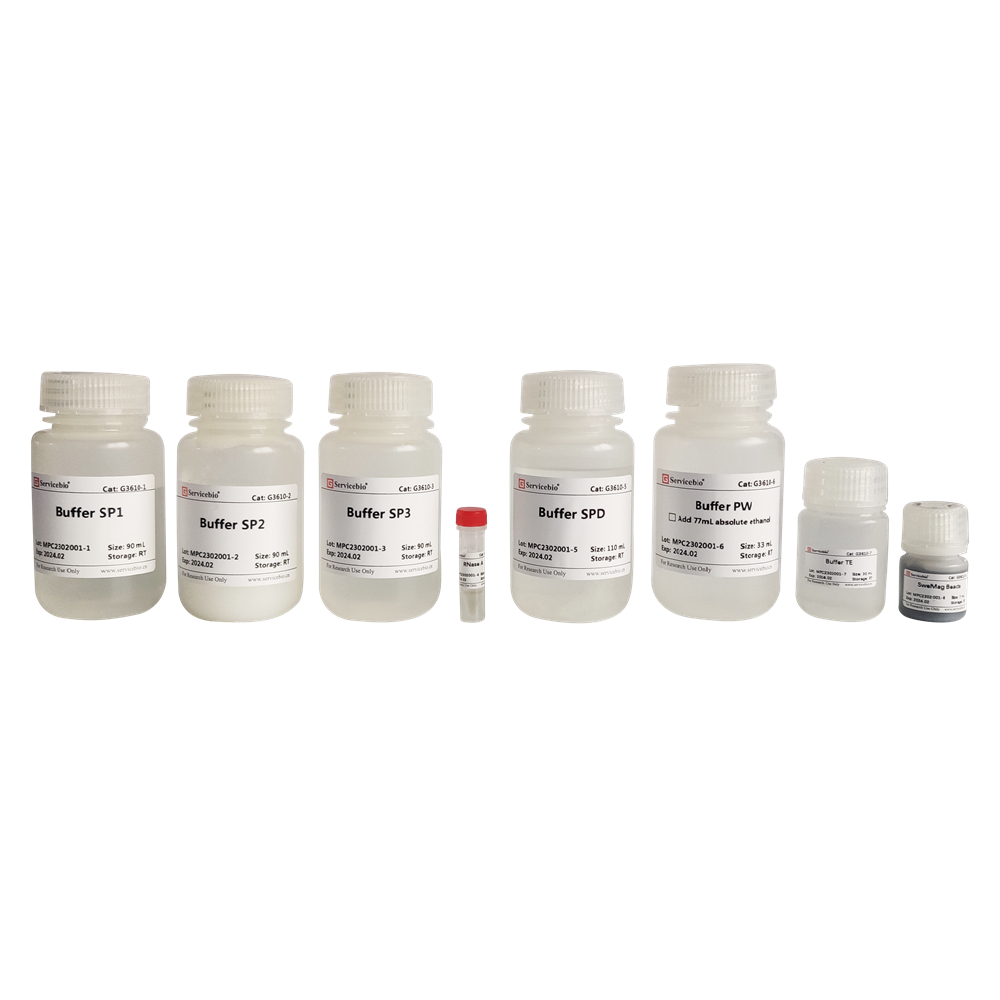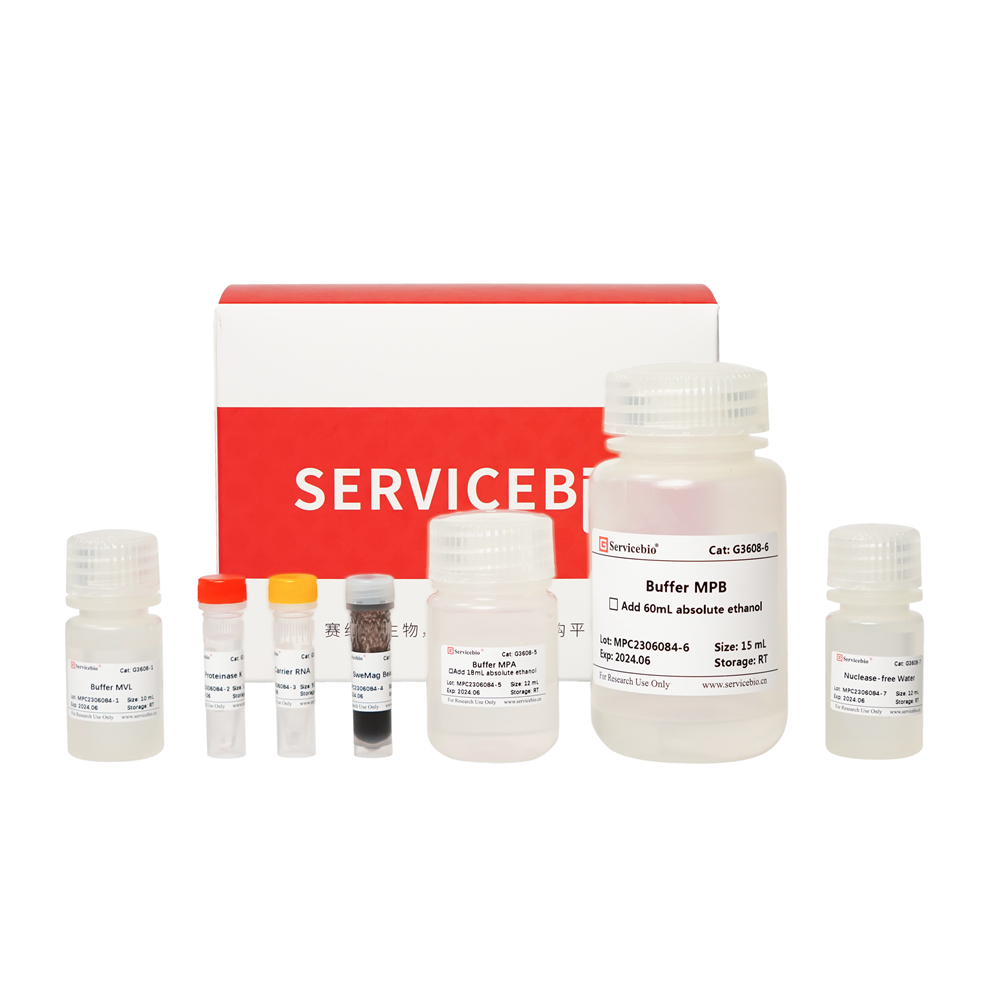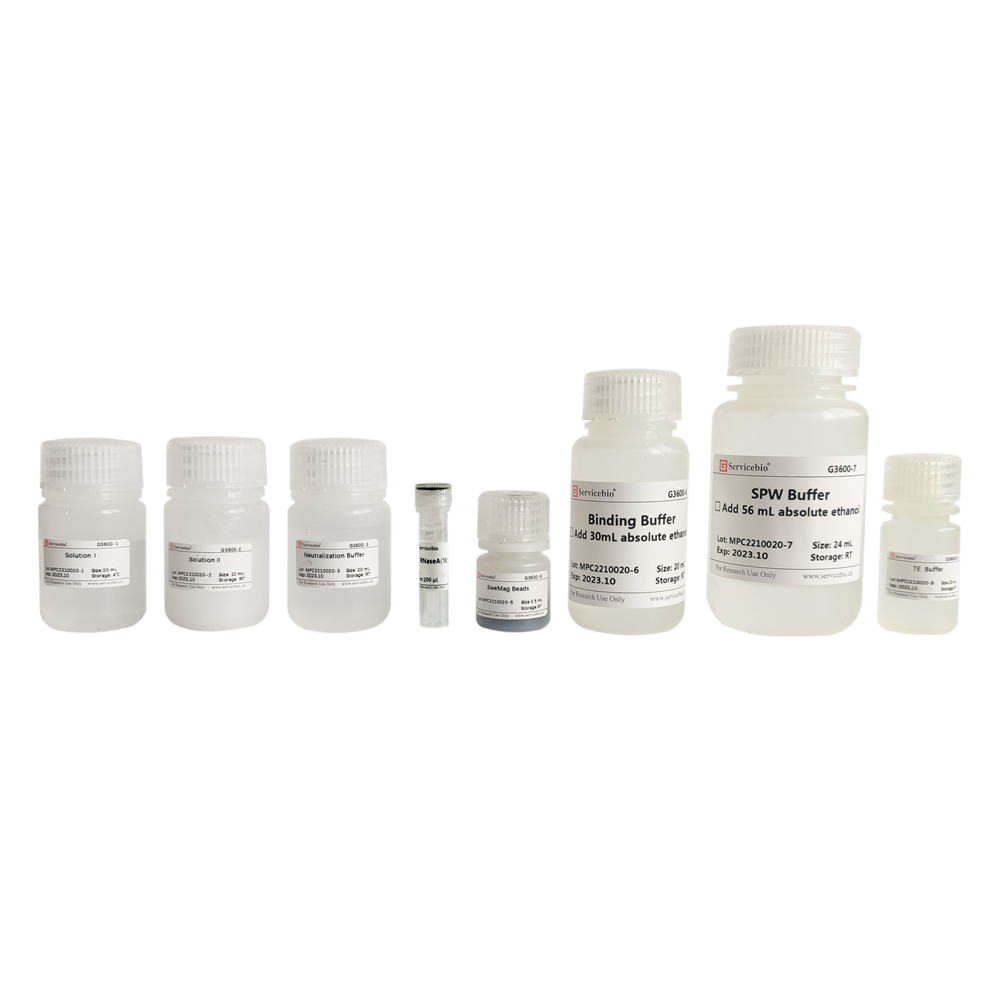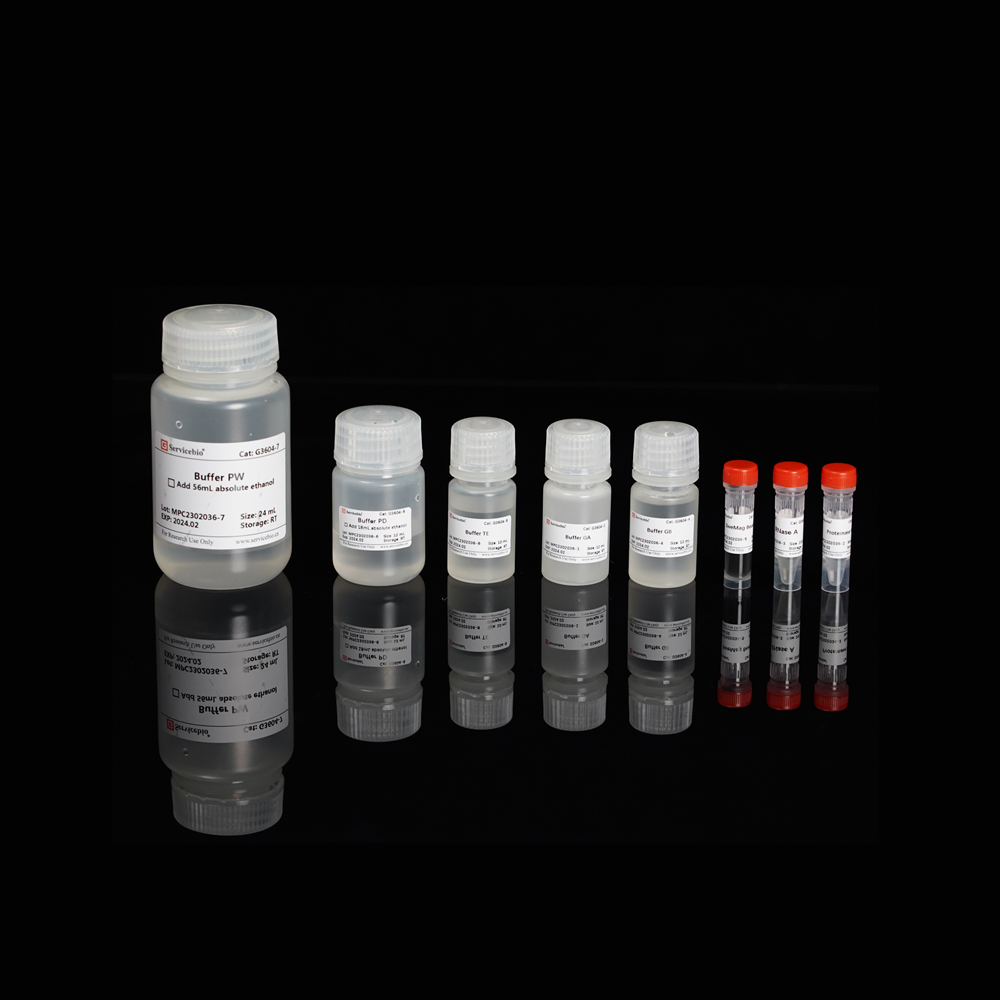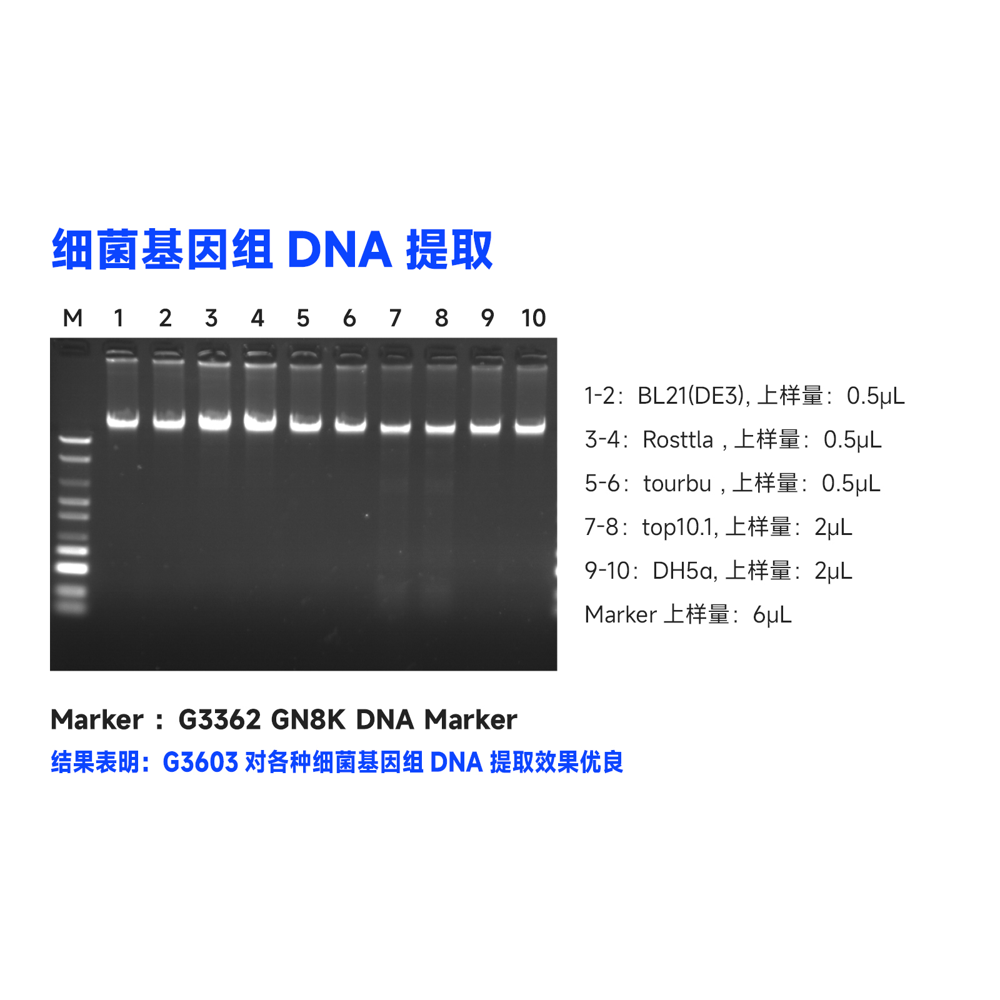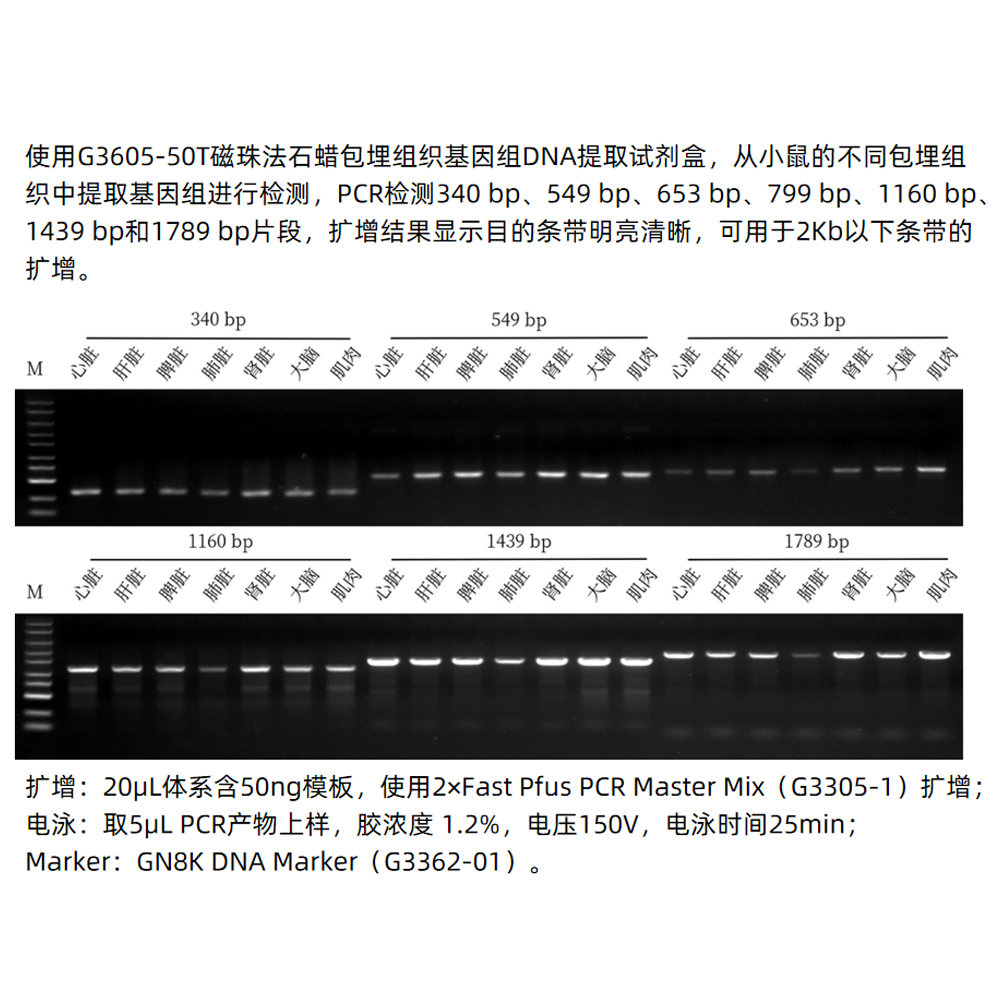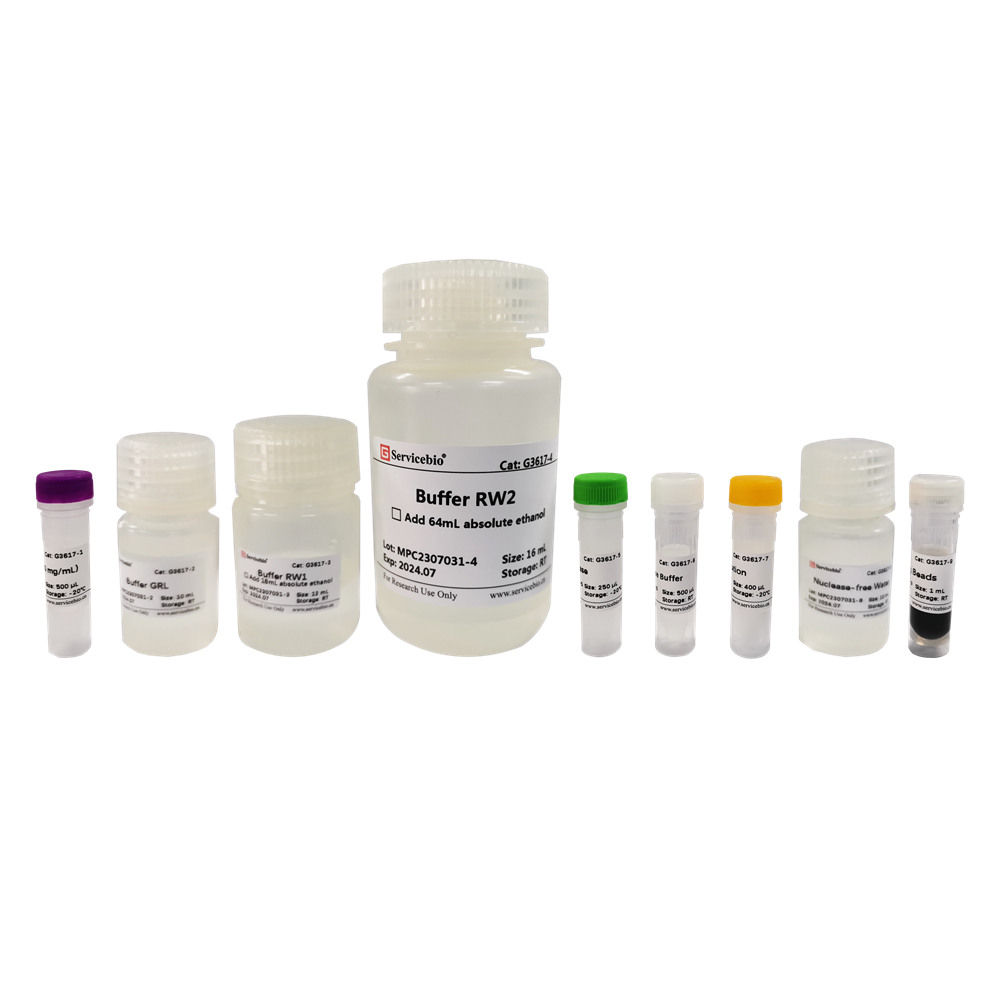Description
Product Description
This kit is designed for the extraction of RNA from both Gram-positive and Gram-negative bacteria. It utilizes a unique lysis buffer system combined with silica column purification technology to rapidly and effectively extract bacterial RNA. The extraction process can be completed within 30-40 minutes, resulting in high RNA yield and purity. The extracted RNA is suitable for a wide range of downstream molecular biology experiments, including RT-PCR, Real-Time PCR, chip analysis, Northern blotting, dot blotting, PolyA selection, in vitro translation, RNase protection analysis, and molecular cloning.
Storage and Transportation
Lysozyme, DTT solution, and DNase are transported on wet ice and should be stored at -20°C. Other reagents can be transported and stored at room temperature. The kit has a shelf life of 12 months.
| Component Number | Component | G3644-50T |
| G3644-1 | Lysozyme | 500 μL |
| G3644-2 | Buffer BRL | 20 mL |
| G3644-3 | Buffer RW1 | 40 mL |
| G3644-4 | Buffer RW2 | 16 mL |
| G3644-5 | DNase | 250 μL |
| G3644-6 | 10×DNase Buffer | 500 μL |
| G3644-7 | DTT Solution | 700 μL |
| G3644-8 | Nuclease-free Water | 10 mL |
| G3644-9 | RNA Spin Columns | 50 |
| instruction | 1 | |
Preparation Before Use
- Prepare 10 mM Tris-HCl (pH 8.0) for resuspending the collected bacterial cells.
- If extracting RNA from Gram-positive bacteria, prepare a water bath or heating block at 37°C in advance.
- If Buffer BRL forms a precipitate, heat it at 37°C to dissolve. Allow it to return to room temperature before use.
- Prior to use, add DTT Solution to Buffer BRL to a final concentration of 4% (e.g., add 40 μL of DTT Solution to 1 mL of Buffer BRL). It is recommended to prepare this mixture fresh. Buffer BRL with added DTT Solution can be stored at 4°C for one week.
- DNase working solution should be prepared immediately before use.
- Prior to use, add 64 mL of ethanol (without water) to Buffer RW2. Mix well before use.
Operating Procedure
- Take 1-3 mL of bacterial culture (total bacterial count should not exceed 10^9 cells). Centrifuge at 12,000 rpm (~13,400×g) at 4°C for 2 minutes to collect the bacterial cells.
Note: Ensure that the supernatant is completely removed, as it may affect the enzymatic digestion of the bacterial cell wall.
Note: Do not use an excessive amount of bacterial cells, as it may result in reduced yield, genomic residue, and protein contamination. For an OD600 of 1, it is recommended to use 1 mL of bacterial culture.
- Resuspend the bacterial cells in 100 μL of 10 mM Tris-HCl containing lysozyme. The concentration of lysozyme and incubation conditions are described in the table below:
Bacterial Categories Lysozyme Concentration Incubation Temperature Incubation Time Gram-negative bacteria (G-) 0.4 mg/mL Room temperature 3-5 min Gram-positive bacteria (G+) 5 mg/mL 37°C 5-10 min
- Add 350 μL of Buffer BRL (confirm that DTT solution has been added) to the resuspended mixture. Vortex and shake to mix thoroughly.
- Add 250 μL of ethanol (100%) to the mixture. Use a pipette to mix by pipetting up and down (precipitation may occur). Transfer the entire mixture, including the precipitate, to an RNA Spin Column. Centrifuge at 12,000 rpm (~13,400×g) at room temperature for 1 minute, and discard the filtrate.
- Add 350 μL of Buffer RW1 to the RNA Spin Column. Centrifuge at 12,000 rpm (~13,400×g) at room temperature for 1 minute, and discard the filtrate.
- Prepare the DNase working solution by adding 40 μL of nuclease-free water, 5 μL of 10× DNase Reaction Buffer, and 5 μL of DNase to a new nuclease-free centrifuge tube. Gently mix by pipetting.
- Suspend the DNase working solution in the center of the membrane of the RNA Spin Column. Let it stand at room temperature for 15 minutes.
- Add 350 μL of Buffer RW1 to the RNA Spin Column. Centrifuge at 12,000 rpm (~13,400×g) at room temperature for 1 minute, and discard the filtrate.
- Add 600 μL of Buffer RW2 to the RNA Spin Column (add Buffer RW2 along the tube wall to help wash off salt residues on the tube wall). Centrifuge at 12,000 rpm (~13,400×g) at room temperature for 1 minute, and discard the filtrate.
- Repeat step 9.
- Place the RNA Spin Column back into a collection tube and centrifuge at 12,000 rpm (~13,400×g) at room temperature for 2 minutes. Transfer the RNA Spin Column to a new nuclease-free 1.5 mL centrifuge tube.
- Leave the RNA Spin Column open at room temperature for 3-5 minutes to allow residual ethanol to evaporate as much as possible.
- Suspend 50-100 μL of nuclease-free water in the center of the membrane of the RNA Spin Column. Let it stand at room temperature for 2 minutes, then centrifuge at 12,000 rpm (~13,400×g) at room temperature for 2 minutes to collect the RNA solution. If a higher concentration of RNA is desired, the first elution can be added back to the RNA Spin Column, let it stand at room temperature for 2 minutes, then centrifuge at 12,000 rpm (~13,400×g) at room temperature for 2 minutes for an additional elution.
- Store the obtained RNA solution at -80°C.
Notes:
- Please read the product manual carefully before performing the procedure.
- Wear appropriate laboratory attire, disposable gloves, and a mask. Avoid talking. Ensure that all instruments used during RNA extraction and the water or reagents used for solution preparation are nuclease-free.
- After extraction, handle the RNA using nuclease-free glassware or plasticware. Glassware can be baked at 150°C in an oven for 4 hours, while plasticware can be soaked in 0.5 M NaOH solution for 10 minutes, rinsed with water, and then autoclaved at 121°C for 30 minutes to remove RNases.
- The ease of enzymatic digestion of different bacterial cell walls may vary. Gram-positive bacterial cell walls are generally more difficult to lyse. Customers can explore the appropriate lysozyme concentration and incubation time based on the bacterial species.
- Some reagents are volatile or prone to oxidation, so they should be protected from prolonged exposure to air. Ensure that all reagent containers are tightly closed after use.
- Use a dedicated RNA extraction workstation and electrophoresis equipment.
This product is for research use only and is not intended for clinical diagnosis.
(Product packaging may vary; refer to the actual product.)

